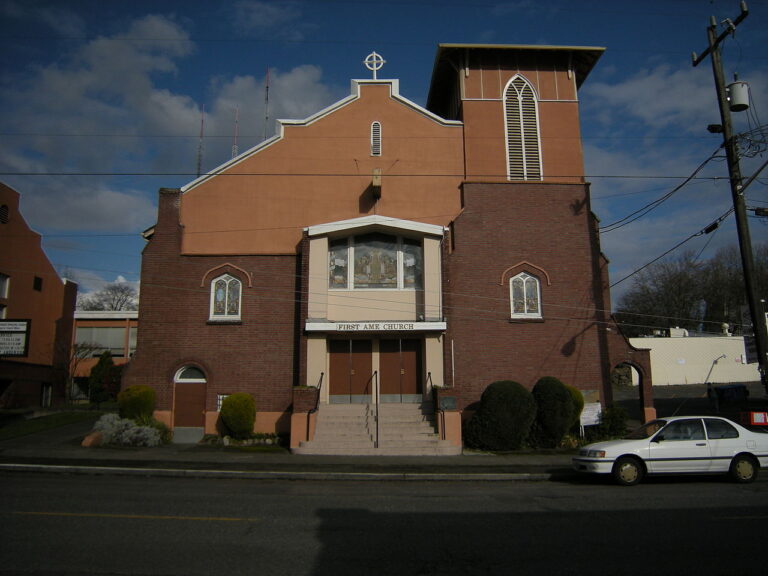Published on May 18, 2022

Rev. George Davenport Jr. had a vision of using real estate to sustain his church community in its historically Black Central District neighborhood. But while the streets around the church gentrified, he struggled through the complex landscape of zoning laws, building codes and speculative funding options. Then he stumbled upon the Nehemiah Initiative and the work of the UW’s Nehemiah Interdisciplinary Studio. A partnership between Black church leaders and community advocates seeking to preserve their communities and the UW’s College of Built Environments, the collaboration engages students in charting an economically sustainable future for the churches in one of America’s most expensive ZIP codes.
“I was in the desert looking for a cup of water,” Davenport says, and “the Nehemiah Initiative and the University of Washington really gave me some water to drink.”
After spending time with church and community leaders, the UW-based group of faculty and students developed a detailed assessment. It provided the Peoples Institutional Baptist Church a path to develop affordable housing for church elders while also generating income from market-rate housing.
It’s a plan the church might not have come to on its own, and thanks to recent changes in state and city laws, it’s a realistic blueprint for the 80-year-old congregation. “I was blown away by the architectural design and the possibilities with the renovation,” Davenport says. “I was blown away by what we could do as far as affordable housing and the creation of curb appeal, and also how it could ultimately benefit my membership.”
There are many decisions to be made, but leaders at Peoples can now see a future that includes the option to remain in the Central District, a section of Seattle that used to be home to the largest African American community north of California, according to Donald King, a UW affiliate professor of architecture and president and CEO of the Nehemiah Initiative.
African Americans once made up more than 73% of the population in the Central District, one of the few places in Seattle available for them to live due to redlining, restrictive covenants and other racist practices. Gentrification and increasing economic disparity have flipped the dynamic in the neighborhood in the 21st century with once affordable houses and properties going for six and seven figures. Today, African Americans make up less than 14% of the neighborhood, and more than a dozen Black churches have moved or closed over the past decade.
King and other community leaders established the Nehemiah Initiative in 2018 to stem the tide. The following year, King worked with fellow professors Rachel Berney, Branden Born, CBE Dean Renée Cheng and Al Levine to develop course offerings. The solution, they found for some, was right under their feet. Many churches have dedicated parking lots, making them cash poor but property rich, as King puts it. “And these parking lots are rarities,” King says. “In their neighborhood, where there’s higher-density development, they can be picked out very clearly in an aerial photo. What’s wrong with this picture?”
Continue reading at University Washington Magazine.
Originally written by Chris Talbott for the University of Washington Magazine.